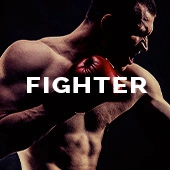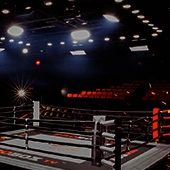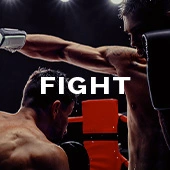By Thomas Hauser
Sometime prior to fighting Floyd Mayweather on May 2 at the MGM Grand in Las Vegas, Manny Pacquiao suffered a torn right rotator cuff. In mid-April, his condition was evaluated at the Kerlan Jobe Orthopedic Clinic in Los Angeles. Pacquiao later told Filipino journalist Ronnie Nathanielsz that he was advised to rest his shoulder for thirty to forty days.
At that point, Pacquiao considered postponing the fight. But he opted instead for a cocktail of pain-killing, anti-inflammatory, and healing drugs approved by the United States Anti-Doping Agency (USADA), which had contracted with Pacquiao and Mayweather to oversee drug testing in conjunction with the fight.
Thereafter, Pacquiao’s preparation for the fight was significantly compromised. Among other things, he stopped sparring for at least a week in an effort to avoid exacerbating his shoulder injury.
At a pre-fight physical administered by the Nevada State Athletic Commission on May 1, Pacquiao (or advisor Michael Koncz; it’s unclear which) filled out an NSAC medical questionnaire and listed the medications that Manny had been taking: Lidocaine, Bupivacaine, Celestone, PRP, and Toradol.
Koncz told the New York Daily News and BoxingScene.com that he was the one who filled out the questionnaire. Bob Bennett (executive director of the Nevada State Athletic Commission) told Fox Sports that Pacquiao did it.
The questionnaire specifically asked, “Have you had any injury to your shoulders, elbows, or hands that needed evaluation or examination? If yes, explain.”
Pacquiao (or Koncz) answered ”no.”
At the bottom of the page, the questionnaire states, “I swear, under penalty of perjury, that the above information is true and correct to the best of my knowledge.” Beneath that are lines for “contestant’s signature” and “second’s signature and name.”
There are two signatures (presumably those of Pacquiao and Koncz).
In the dressing room before the fight, Team Pacquiao asked that a physician they had brought with them be allowed to inject Pacquiao with Toradol (a non-steroidal, pain-killing, anti-inflammatory drug). The NSAC denied the request.
A torn rotator cuff is extremely painful. The worse the tear, the more it hurts. At the post-fight press conference, Pacquiao told the media, “In the third round, I already feel the pain in my shoulder. It’s hard to fight with one hand. What we wanted to do, I could not do because of my shoulder.”
Four days after the fight, Pacquiao underwent surgery in Los Angeles to repair what Dr. Neal ElAttrache (who performed the ninety-minute operation) said was a “significant tear” in his right rotator cuff. Dr. ElAttrache estimates that Pacquiao will be to able resume training in six months and, if he chooses to do so, fight again three to six months after that.
Surgery was Pacquiao’s only realistic option.
"Once you know he has a tear that's not going to heal on its own,” Dr. ElAttrache told ESPN.com, “then the decision for an active person is you want to try to fix this before it gets bigger. This is a severe enough tear that it won't heal without being repaired."
The handling of Pacquiao’s shoulder injury touches on a wide range of issues. Let’s start with the role played by USADA.
USADA is an independent non-governmental sports drug-testing agency whose services are utilized by the United States Olympic and Paralympic movement. It receives approximately $10,000,000 annually in public funding; more in years when the Olympics are held.
In recent years, USADA has moved aggressively to establish a foothold in boxing. As part of that effort, it forged a close working relationship with Richard Schaefer (who has been among Mayweather adviser Al Haymon’s most important allies in boxing).
USADA’s history evinces a disinclination to tell governing state athletic commissions more than it has to. Sometimes – as in the case of Erik Morales (whose “A” and “B” samples tested positive for clenbuterol twice before his 2012 fight in New York against Danny Garcia) – it tells less.
At Mayweather’s insistence, the bout contract that Mayweather and Pacquiao signed to fight each other provided that drug-testing would be conducted by USADA. But the actual contract with USADA remained to be negotiated.
In early March, USADA presented the Pacquiao camp with a contract that allowed the testing agency to grant a retroactive therapeutic use exemption to either fighter in the event that the fighter tested positive for a prohibited drug. That retroactive exemption could have been granted without notifying the Nevada State Athletic Commission or the opposing fighter’s camp.
Team Pacquiao thought that was outrageous and an opportunity for Mayweather to game the system. Pacquiao refused to sign the contract.
Thereafter, Mayweather and USADA agreed to mutual notification and the elimination of retroactive therapeutic use exemptions except in narrowly delineated circumstances. Moreover, with regard to notice, a copy of the final contract contained a section entitled “Therapeutic Use Exemptions,” which states: “Mayweather and Pacquiao agree that both athletes shall be notified within 24 hours of either of the following occurrences: (1) the submission by either athlete of a TUE application; or (2) the approval by USADA of a TUE application submitted by either athlete. Additionally, any modifications to an existing TUE by either athlete shall be communicated to the other athlete within 24 hours. Notification shall include: (1) the date of the application; (2) the prohibited substance(s) or method(s) for which the TUE is sought; and (3) the manner of use for the prohibited substance(s) or method(s) for which the TUE is sought.”
The issue of therapeutic use exemptions is moot insofar as the drugs Pacquiao took prior to Mayweather-Pacquiao are concerned. Manny’s representatives asked USADA about the propriety of using these drugs and were advised that four of the five are not on the list of substances banned by WADA and the fifth (Celestone) is only prohibited “in competition” (within 48 hours of a fight).
Because the drugs are not banned, there was no need for a therapeutic use exemption. Nor did USADA need to know why the drugs were being administered or have any legal obligation to report their use to the Nevada State Athletic Commission.
On May 4, as questions regarding Pacquiao’s injury resounded through the media, a “Joint Statement from Team Pacquiao and Top Rank” was released. In part, the statement read, “Manny continued to train and his shoulder improved, though not 100%. Again, in consultation with his doctors, promoter, and advisors, Manny decided to proceed with the fight, anticipating that he could receive his pre-fight treatment. That specific treatment had been approved by USADA in writing at least five days before the fight.”
Pacquiao said one day after the bout that he did not disclose the fact of his injury to the public or to the Nevada State Athletic Commission because he feared Mayweather would use the knowledge to his competitive advantage in the fight.
That leaves open the issue of whether there should have been a fight.
Meeting with reporters in his hotel suite on May 3, Pacquiao acknowledged, “We talked about it [postponement]. But if it heals, if it recovers, it’s okay. Let’s just not use it in training. Then, on the night of the fight, it will be injected with the numbing agent. It’s not a steroid, but it’s legal here for numbing. The problem is we were sabotaged.”
Some Pacquiao partisans have voiced conspiratorial theories. “It’s not rocket science,” says one Pacquiao advocate. “Everyone knew that, if Mayweather won, his next fight would most likely be in Las Vegas. If Manny won, his next fight could be in Macau or Cowboys Stadium or wherever. Who do you think the Las Vegas establishment was rooting for?”
Nevada State Athletic Commission officials take issue with that view
Executive director Bob Bennett notes that the NSAC was unaware of Pacquiao’s injury until fight night. “Imagine if you’re Mr. Mayweather,” Bennett told Geoffrey Gray of True.ink. “And you hear an hour before the fight the Commission granted a special request to have your opponent get an injection of medicine into his shoulder. The paperwork should have been filled out properly.”
NSAC chairman Francisco Aguilar voiced similar sentiments, saying, “We get to the fight. A little after 6:00 PM, we were made aware Pacquiao potentially had a shoulder injury. Then, after we were made aware about the injury, a request came to inject his shoulder with lidocaine and a couple of anti-inflammatories. We gathered our doctor, Dr. Trainor. We got with the two doctors that did his medical exam prior to weigh-in. And we started going through some of these questions as to what does this mean. I made the decision not to allow [the shot] because of the timing of the request and the fact that the fight was going to occur in the next ninety minutes. The medications he was taking were disclosed on his medical questionnaire, but not the actual injury. There is a process. And when you try to screw with the process, it's not going to work for you.”
Mayweather-Pacquiao left a long line of aggrieved parties in its wake; people who spent thousands of dollars to journey to Las Vegas or a hundred dollars to buy the pay-per-view telecast. There were “little people” who bet their paychecks on Pacquiao.
The lawsuits have begun. Within a week of the fight, multiple class actions had been filed. Pacquiao, Top Rank, Mayweather Promotions, Showtime, and HBO have been named as defendants. Under Nevada law, the Nevada State Athletic Commission is immune to suit.
One of the problems that plaintiffs will face is, “Where do you draw the line?” Insofar as Mayweather-Pacquiao is concerned, there appears to have been a cover-up supplemented by affirmative misrepresentations over a period of several weeks. But what if, instead of a torn rotator cuff, Pacquiao had been suffering from a sprained ankle? A badly sprained ankle? What if a fighter has the flu before a fight and conceals that information? The NFL mandates pre-game injury reports. If Bill Belichick neglects to mention that Tom Brady has a “slight” rotator cuff tear in his right shoulder, are fans who bought tickets for the game entitled to get their money back? Mayweather-Pacquiao lasted the full twelve rounds. Suppose Manny had quit after round one because of his shoulder injury. Would that make a difference?
And there are more unanswered questions.
When the Nevada State Athletic Commission doctor who examined Pacquiao one day before the fight saw the medications listed on Manny’s questionnaire, shouldn’t standard procedure have led him to ask, “Why were you taking these medications?” And shouldn’t that question have been followed by, “Is there an MRI?”
PRP (one of the medications listed) is a platelet rich plasma injection commonly used to promote healing. Wasn’t that a tip-off? Did the examining doctor ask when the Celestone was used? Unlikely. But Celestone use was illegal after nine o’clock on Thursday night.
The May 4 “Joint Statement from Team Pacquiao and Top Rank” reads in part, “The medication approved for fight night was a non-steroidal anti-inflammatory (Toradol) [parenthesis in original].”
Toradal increases the possibility of bleeding, both from cuts and in the brain. Was that really a wise choice?
And if the drugs were legal, which they are under the WADA Code and the rules of the Nevada State Athletic Commission (which incorporates the WADA Code by reference), why did Pacquiao need permission to use them on fight night?
There will be a lot of grandstanding in the weeks ahead. NSAC chairman Francisco Aguilar went so far as to suggest that Pacquiao could be indicted for perjury.
“It’s something we’re looking at, and an issue we’ll be discussing with the Attorney General,” Aguilar told True.ink. “It’s a serious matter. We need to know the state of health of our boxers.”
This from the chairman of a commission that, last September, accepted Floyd Mayweather’s testimony that Showtime had defrauded the public by editing a sparring session to dishonestly portray it as a 31-minute fight and used fake marijuana to help sell pay-per-view buys.
Let’s get real! Does anyone on the planet think that the NSAC would have postponed the fight If Pacquiao had answered “yes” to the question of whether he’d suffered an injury to his shoulder?
Everyone – Pacquiao, Top Rank, Mayweather, Mayweather Promotions, the MGM Grand, Showtime, HBO, and the NSAC – wanted the fight to happen. Under the circumstances and given the parties involved, there was no way it was going to be pulled down.
That said; a fighter can’t train seriously for a big fight if he isn’t sparring. And the overwhelming likelihood is that Pacquiao’s injury, however bad it was at the start, got worse if he put in any hard work in the gym. A small tear that would have healed on its own with rest became more pronounced and the muscle more inflamed in the weeks leading up to the fight and was further exacerbated in the fight itself.
Muhammad Ali vs. George Foreman was another “Fight of the Century.” On September 17, 1974, eight days before the fight was scheduled to take place (and after hundreds of people associated with the promotion had traveled to Zaire), Foreman suffered a cut above his right eye in sparring. Nobody covered it up with “secret closed-door workouts.” Nobody said, “Let’s stitch it up, cover the stitches with make-up, and take the stitches out on fight night.” The fight was rescheduled for October 30 and is now a treasured part of boxing lore.
Floyd Mayweather was scheduled to fight Juan Manuel Marquez on July 18, 2009. In mid-June, he injured a rib in training and pulled out of the fight. The world didn’t end. The fight was rescheduled for September 19, and Mayweather scored a lopsided unanimous decision triumph.
Mayweather-Pacquiao should have been postponed.
Jim Lampley, who handled blow-by-blow duties for the telecast, put the matter in perspective three days after the debacle when he told Rich Eisen of Fox Sports, “It was a cynical enterprise to begin with in certain ways and now seems even more so. To have gone ahead with the enterprise when one of the fighters turns out to be damaged goods, and for all of the advertising and promotion to have continued to base itself on the notion that this was the fight of the century and the best combat that boxing could offer; uninitiated fans who only know a little bit about boxing and buy in at the level at which they bought in are bound to feel cheated today. I think it’s highly unfortunate for our sport. I think it’s bad for Pacquiao’s image and taints his great and noble career. I could go on and on about the ways in which this is unfortunate for boxing.”
Thomas Hauser can be reached by email at thauser@rcn.com . His most recent book (Thomas Hauser on Boxing) was published by the University of Arkansas Press.


